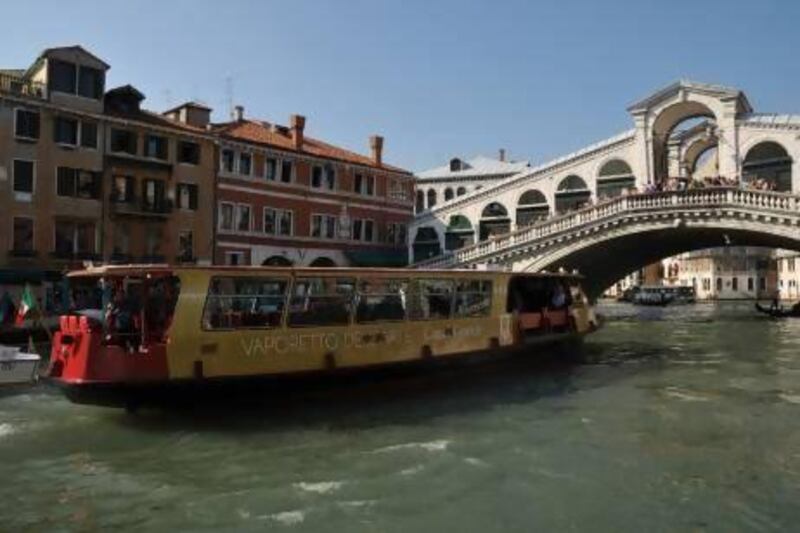Until the 19th Century, Venice - its two main parts divided by the Grand Canal and known by the translation from Italian of "over here" and "over there" - had only one bridge, the Rialto.
Swarms of ferries carried people and merchandise to and from each side.
As late as the second half of the 12th Century, when the pontoon-style ancestor of the original Ponte di Rialto was built, the city had no dry crossing at all.
Now there are four bridges connecting north and south across the Grand Canal.
Their importance to citydwellers, traders and tourists alike is immeasurable but even their benefits are outweighed by the contribution to daily life made by the vaporetto service, the fleet of 163 small boats, originally steamers, that connect all parts of the city centre and the surrounding inhabited islands.
The service was launched in 1881, to the initial fury of gondoliers who rightly feared tough competition.
Need triumphed over sentiment and the first eight vaporetti, or canal buses, were built in the north-western French city of Rouen and delivered to Venice via France's Languedoc canal and a circuit of the Italian cost.
The service is financed by ticket sales plus a subsidy from provincial government that is steadily falling as Italy grapples with economic crisis.
Figures for the past few years illustrate Venice's appeal to tourists from every corner of the world, with considerable growth in passenger volume except during the worst of the economic crisis, notably 2008 when numbers declined by more than 7 million, from 102,874,078 in 2007 to 95,861,460 in 2008. Since then they have steadily recovered.
In addition to seeking savings on operating costs, the ACTV public transport company that runs the service has introduced a waterborne equivalent of the "hop on, hop off" buses found on the streets of some of the world's capital cities.
The Vaporetto dell'Arte was launched in June and 64,000 people travelled on the three buses in what remained of the first year. Numbers are sharply increasing so that last month, half as many again bought tickets compared with the first month of operation last summer. With the main tourism season yet to start, more progress is certain.
For the main vaporetto service, fares seem steep, €7 (Dh33.41) for a single journey although the busy tourist will make considerable savings with travel passes; as an example, a 36-hour pass costs €25, less than the cost of four single journeys.
Tourists may not appreciate the fact that what they pay heavily subsidises transport for locals. Residents of Venice and the Veneto region buy the "cartavenezia", five-year passes for €10 and €20, respectively, and these entitle them to cut-rate travel at just €1.30 a journey.
Any citizen of European Union member states can purchase passes to obtain the same privileges but theirs cost €40 each. Consequently, the vast majority of the 45,000 passes in circulation are in the hands of people living in the city or region.
The most popular vaporetto routes are lines 1 and 2. The first takes a zigzagging route between 20 stations from the Piazzale Roma to the Lido.
As well as being a practical way of getting to and from sightseeing locations, it offers a striking tour of the elegant banks of the Grand Canal, thus ensuring packed boats with space on the outer decks scarce from spring to autumn.
Line 2 is an express service operating from San Zaccaria, near the Piazza San Marco and cutting through the Giudecca Canal to the Piazzale Roma and the railway station. Boats continue to serve the main lines into the small hours.
ACTV's fleet of onland buses comprises more than 600 vehicles carrying 80 million passengers annually.
The cluster of islands making up central Venice are connected to the mainland by the Ponte della Libertà, a long road bridge opened in 1933 by the Fascist dictator, Benito Mussolini.







